Do you have a question about the Panasonic Viera TX-L32D26BA and is the answer not in the manual?
Receives freesat - free digital satellite broadcasts in the UK.
Receives DVB digital terrestrial broadcasts.
Supports Gemstar-TV Guide sent from the GUIDE Plus+ system.
Enjoys high definition digital picture and sound via HDMI.
Supports recording, playback, and media viewing via USB.
Enables programme reminders and recordings to external devices.
Allows viewing of photos and videos recorded on SD Cards.
Supports the latest standard SDXC Card for higher storage.
Supports playback of high-definition video recorded in AVCHD format.
Offers good compatibility for playing DivX video files.
Makes digital electronics easier to use on a home network.
Enjoys internet content like photos, videos, and weather on TV.
Link up and control connected equipment easily.
Displays special feature icons for easy accessibility.
An anti-theft function to help identify the owner.
Provides additional soundtrack for visually-impaired viewers.
Essential warnings for electrical shock, fire, and damage related to the mains plug.
Covers care, ventilation, moving the TV, storage, and volume safety.
Lists included items like remote control, batteries, and manuals.
Lists optional items such as wireless LAN adaptors and cameras.
Identifies and explains the functions of the remote control buttons.
Instructions for connecting terrestrial aerials and satellite dishes.
Guidelines for connecting VCRs, DVD players, and cable TV boxes.
Process for automatic channel tuning and postcode input.
How to select TV modes, channels, and use information banners.
Instructions for displaying subtitles and changing aspect ratio.
Switching between channels and setting the TV to turn off automatically.
How to use the Electronic Programme Guide for channel and program information.
Accessing channel lists in Other Sat. mode.
Explains the features of digital teletext services.
Explains the features of analogue teletext services.
How to switch between different input sources (AV, HDMI, etc.).
Controlling connected devices like DVD recorders using the TV remote.
Guide to accessing and using special TV features via VIERA TOOLS.
How to access and navigate the TV's main menu structure.
Detailed adjustments for picture quality and viewing modes.
Detailed adjustments for sound modes, volume, and audio output.
Overview of setup options including tuning, network, and link settings.
Configuration for display, system, network, and other TV settings.
Steps to automatically retune all available freesat channels.
Steps to automatically retune DVB or Analogue channels.
Retuning, editing, and creating favourite lists for freesat channels.
Creating favourite channel lists and checking signal.
Hiding unwanted freesat channels from the channel list.
Sorting DVB channels by region and manual tuning.
Creating DVB favourite lists and editing channels.
Hiding unwanted DVB channels and editing channel list.
Updating DVB list and checking DVB signal condition.
Hiding unwanted analogue channels and editing channel list.
Manually setting analogue channels after auto setup.
Manually tuning and checking signal for other satellite channels.
Automatically tuning receivable digital satellite channels.
Adding newly found satellite channels to the list.
Creating favourite channel lists for other satellite channels.
Hiding and editing other satellite channels.
Resets the TV to its original condition, erasing settings.
How to set timers for recording or reminders using the menu.
Configuring specific details for timer programming events.
Using TV Guide data for timer programming.
Locking specific channels or AV inputs and controlling access.
Procedure to change the Child Lock PIN number.
Customizing input names and skipping unused terminals.
Setting owner ID and personal information for security.
Steps to access the menu for CI modules (Pay TV).
Instructions for automatic and manual TV software updates.
Connecting a PC and adjusting display settings.
Securing picture settings for specific viewing modes.
Fine-tuning advanced picture parameters like white balance and gamma.
Initializing and registering a USB HDD for TV recording.
The process of registering and confirming USB HDD setup.
Procedure to remove a registered USB HDD.
Instantly recording the current program.
Continuously recording the live TV program.
Information on supported file formats for photos, videos, and music.
Instructions for inserting and removing SD cards and USB flash memory.
Switching between connected media sources (SD Card, USB HDD).
Procedure for safely ejecting USB devices to prevent data corruption.
Viewing photos, sorting, single view, and slideshow.
Configuring background music, frame type, and transition effects.
Viewing and playing video files from various sources.
Controls for video playback including pause, fast forward, and stop.
Playing and deleting recorded content from the USB HDD.
Adjusting audio output settings for video playback.
Configuring video preview and repeat playback settings.
Playing music files and managing music settings.
Registering music files as background music for photo slideshows.
Understanding DLNA for sharing media on a home network.
Accessing internet content and services via VIERA CAST.
Accessing interactive services through freesat.
Connecting the TV to the network via LAN or Wireless.
Setting up network parameters like IP address and DNS.
Downloading and installing TV software updates.
Configuring wired network connections.
Configuring proxy server settings for network access.
Setting up wireless network connections using an adaptor.
Connecting wirelessly using WPS or manual configuration.
Accessing and viewing media stored on DLNA servers.
Using the TV remote to control a DIGA recorder.
Configuring settings for photo and video playback.
Adjusting audio output settings for video content.
Accessing and using internet services available through VIERA CAST.
Summary of Q-Link and VIERA Link capabilities.
Information on connecting equipment via SCART for Q-Link.
Information on connecting equipment via HDMI/SCART for VIERA Link.
Connecting equipment via HDMI and managing audio outputs.
Preparations and features for using Q-Link.
Recording programs directly using Q-Link functionality.
Details on features provided by VIERA Link HDAVI Control.
Using Standby Power Save and Intelligent Auto Standby.
Recording programs directly using VIERA Link.
Pausing and resuming live TV broadcasts.
Using the TV remote to control connected device menus.
Controlling home theatre speaker output via VIERA Link.
Chart showing equipment compatibility with TV terminals.
Automatic adjustment of aspect ratio for optimal viewing.
Important information and precautions regarding SD cards.
Details on DivX video file formats and playback.
Connecting equipment via HDMI for high-definition audio/video.
Connecting a PC to the TV for display and audio.
Detailed pinout information for SCART and HDMI terminals.
Instructions for setting up Windows 7 as a media server.
Guidelines for connecting USB devices like HDDs and flash drives.
List of input signals compatible with the TV.
Common questions and solutions for TV issues.
Troubleshooting problems related to the TV screen and sound.
Troubleshooting problems with channels and signal reception.
Troubleshooting HDMI, network, and remote control problems.
Troubleshooting other common TV problems like power and overheating.
Instructions for cleaning the TV panel, cabinet, pedestal, and mains plug.
Customer care contact details and website information.
Space to record model/serial numbers for warranty purposes.
Receives freesat - free digital satellite broadcasts in the UK.
Receives DVB digital terrestrial broadcasts.
Supports Gemstar-TV Guide sent from the GUIDE Plus+ system.
Enjoys high definition digital picture and sound via HDMI.
Supports recording, playback, and media viewing via USB.
Enables programme reminders and recordings to external devices.
Allows viewing of photos and videos recorded on SD Cards.
Supports the latest standard SDXC Card for higher storage.
Supports playback of high-definition video recorded in AVCHD format.
Offers good compatibility for playing DivX video files.
Makes digital electronics easier to use on a home network.
Enjoys internet content like photos, videos, and weather on TV.
Link up and control connected equipment easily.
Displays special feature icons for easy accessibility.
An anti-theft function to help identify the owner.
Provides additional soundtrack for visually-impaired viewers.
Essential warnings for electrical shock, fire, and damage related to the mains plug.
Covers care, ventilation, moving the TV, storage, and volume safety.
Lists included items like remote control, batteries, and manuals.
Lists optional items such as wireless LAN adaptors and cameras.
Identifies and explains the functions of the remote control buttons.
Instructions for connecting terrestrial aerials and satellite dishes.
Guidelines for connecting VCRs, DVD players, and cable TV boxes.
Process for automatic channel tuning and postcode input.
How to select TV modes, channels, and use information banners.
Instructions for displaying subtitles and changing aspect ratio.
Switching between channels and setting the TV to turn off automatically.
How to use the Electronic Programme Guide for channel and program information.
Accessing channel lists in Other Sat. mode.
Explains the features of digital teletext services.
Explains the features of analogue teletext services.
How to switch between different input sources (AV, HDMI, etc.).
Controlling connected devices like DVD recorders using the TV remote.
Guide to accessing and using special TV features via VIERA TOOLS.
How to access and navigate the TV's main menu structure.
Detailed adjustments for picture quality and viewing modes.
Detailed adjustments for sound modes, volume, and audio output.
Overview of setup options including tuning, network, and link settings.
Configuration for display, system, network, and other TV settings.
Steps to automatically retune all available freesat channels.
Steps to automatically retune DVB or Analogue channels.
Retuning, editing, and creating favourite lists for freesat channels.
Creating favourite channel lists and checking signal.
Hiding unwanted freesat channels from the channel list.
Sorting DVB channels by region and manual tuning.
Creating DVB favourite lists and editing channels.
Hiding unwanted DVB channels and editing channel list.
Updating DVB list and checking DVB signal condition.
Hiding unwanted analogue channels and editing channel list.
Manually setting analogue channels after auto setup.
Manually tuning and checking signal for other satellite channels.
Automatically tuning receivable digital satellite channels.
Adding newly found satellite channels to the list.
Creating favourite channel lists for other satellite channels.
Hiding and editing other satellite channels.
Resets the TV to its original condition, erasing settings.
How to set timers for recording or reminders using the menu.
Configuring specific details for timer programming events.
Using TV Guide data for timer programming.
Locking specific channels or AV inputs and controlling access.
Procedure to change the Child Lock PIN number.
Customizing input names and skipping unused terminals.
Setting owner ID and personal information for security.
Steps to access the menu for CI modules (Pay TV).
Instructions for automatic and manual TV software updates.
Connecting a PC and adjusting display settings.
Securing picture settings for specific viewing modes.
Fine-tuning advanced picture parameters like white balance and gamma.
Initializing and registering a USB HDD for TV recording.
The process of registering and confirming USB HDD setup.
Procedure to remove a registered USB HDD.
Instantly recording the current program.
Continuously recording the live TV program.
Information on supported file formats for photos, videos, and music.
Instructions for inserting and removing SD cards and USB flash memory.
Switching between connected media sources (SD Card, USB HDD).
Procedure for safely ejecting USB devices to prevent data corruption.
Viewing photos, sorting, single view, and slideshow.
Configuring background music, frame type, and transition effects.
Viewing and playing video files from various sources.
Controls for video playback including pause, fast forward, and stop.
Playing and deleting recorded content from the USB HDD.
Adjusting audio output settings for video playback.
Configuring video preview and repeat playback settings.
Playing music files and managing music settings.
Registering music files as background music for photo slideshows.
Understanding DLNA for sharing media on a home network.
Accessing internet content and services via VIERA CAST.
Accessing interactive services through freesat.
Connecting the TV to the network via LAN or Wireless.
Setting up network parameters like IP address and DNS.
Downloading and installing TV software updates.
Configuring wired network connections.
Configuring proxy server settings for network access.
Setting up wireless network connections using an adaptor.
Connecting wirelessly using WPS or manual configuration.
Accessing and viewing media stored on DLNA servers.
Using the TV remote to control a DIGA recorder.
Configuring settings for photo and video playback.
Adjusting audio output settings for video content.
Accessing and using internet services available through VIERA CAST.
Summary of Q-Link and VIERA Link capabilities.
Information on connecting equipment via SCART for Q-Link.
Information on connecting equipment via HDMI/SCART for VIERA Link.
Connecting equipment via HDMI and managing audio outputs.
Preparations and features for using Q-Link.
Recording programs directly using Q-Link functionality.
Details on features provided by VIERA Link HDAVI Control.
Using Standby Power Save and Intelligent Auto Standby.
Recording programs directly using VIERA Link.
Pausing and resuming live TV broadcasts.
Using the TV remote to control connected device menus.
Controlling home theatre speaker output via VIERA Link.
Chart showing equipment compatibility with TV terminals.
Automatic adjustment of aspect ratio for optimal viewing.
Important information and precautions regarding SD cards.
Details on DivX video file formats and playback.
Connecting equipment via HDMI for high-definition audio/video.
Connecting a PC to the TV for display and audio.
Detailed pinout information for SCART and HDMI terminals.
Instructions for setting up Windows 7 as a media server.
Guidelines for connecting USB devices like HDDs and flash drives.
List of input signals compatible with the TV.
Common questions and solutions for TV issues.
Troubleshooting problems related to the TV screen and sound.
Troubleshooting problems with channels and signal reception.
Troubleshooting HDMI, network, and remote control problems.
Troubleshooting other common TV problems like power and overheating.
Instructions for cleaning the TV panel, cabinet, pedestal, and mains plug.
Customer care contact details and website information.
Space to record model/serial numbers for warranty purposes.
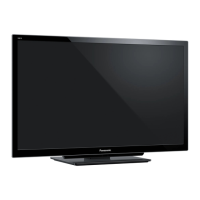
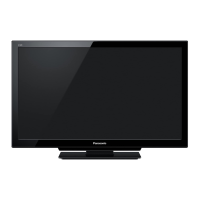
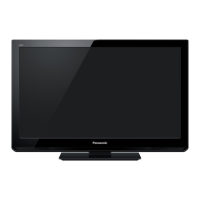
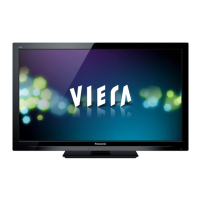
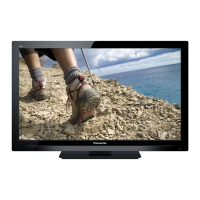
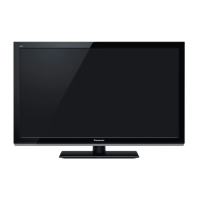

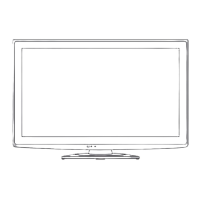
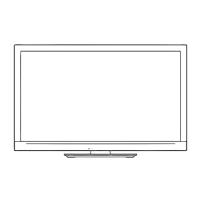
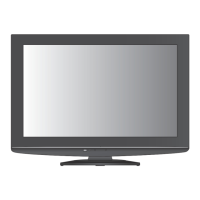

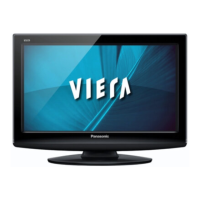
